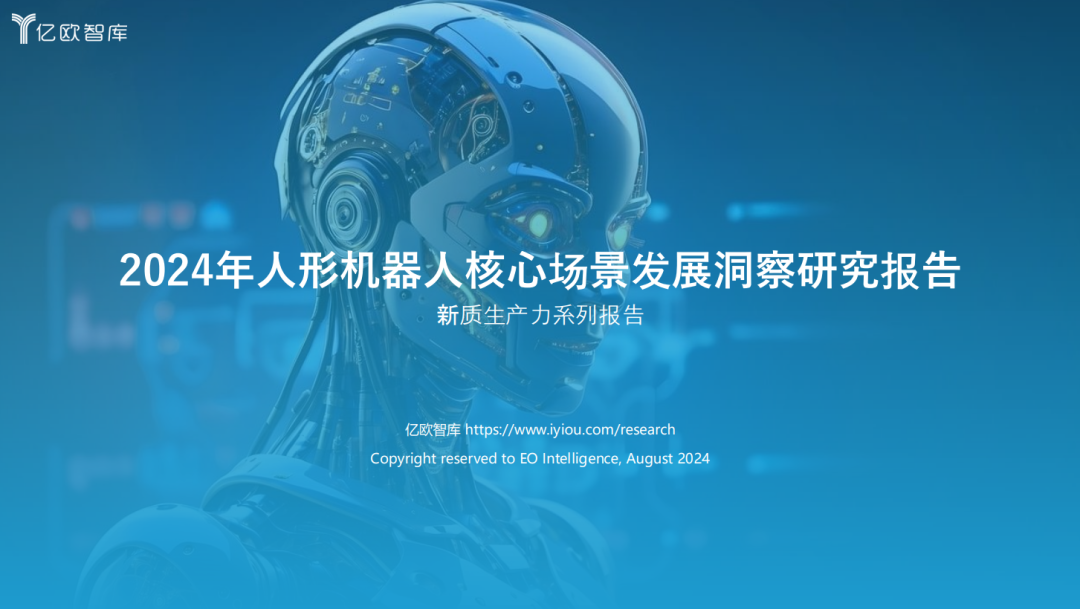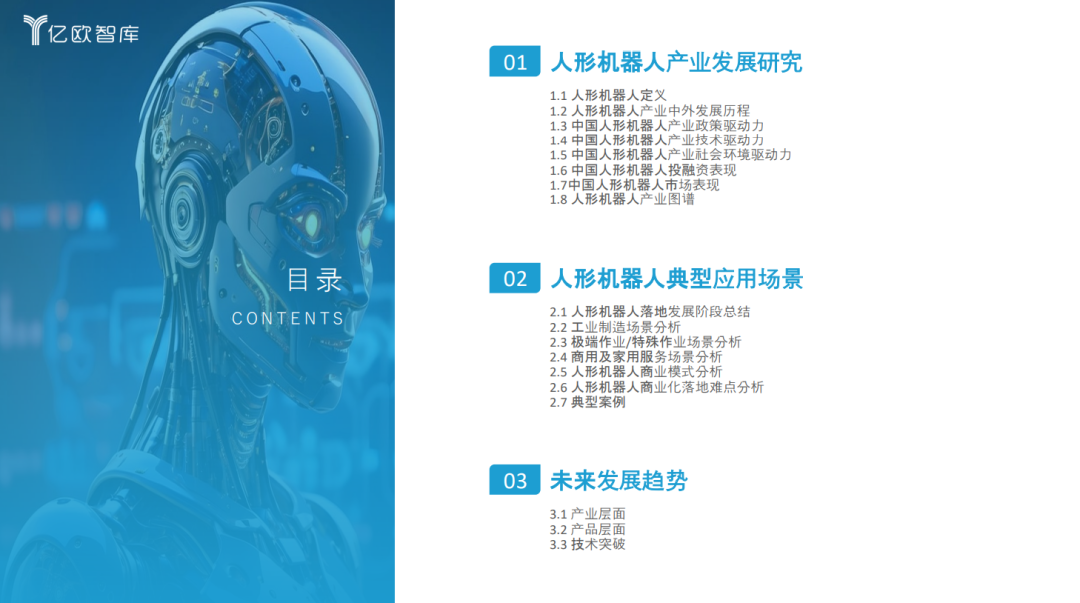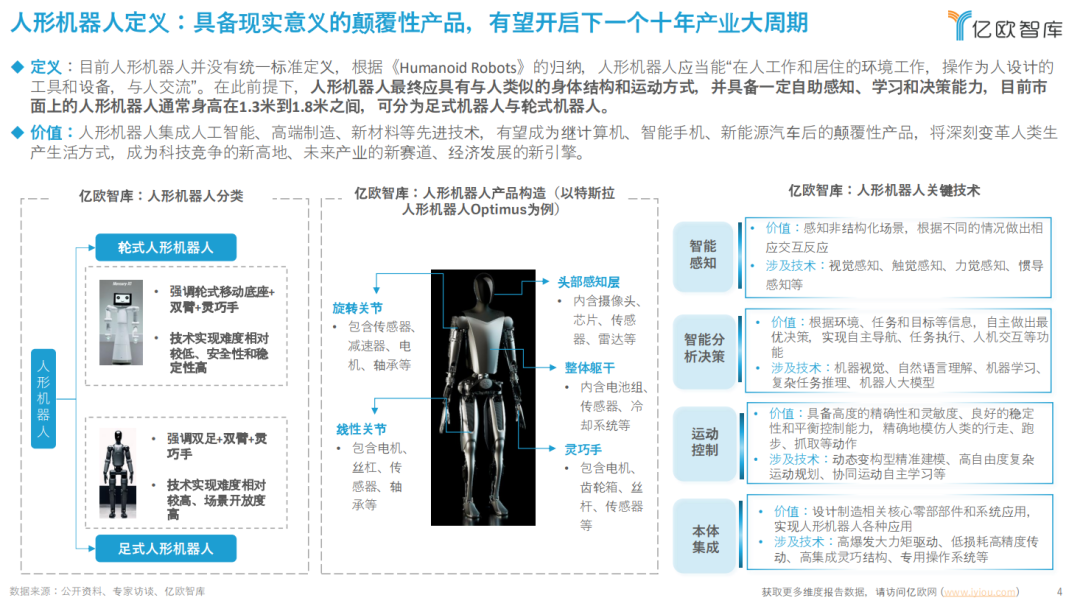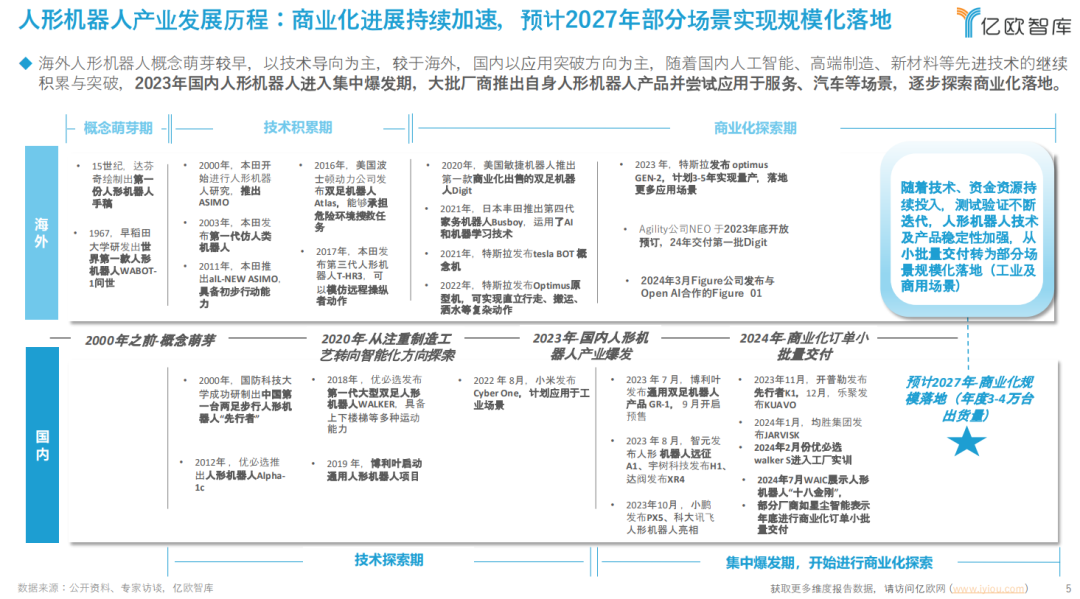
Definition of Humanoid Robots: Disruptive products with real significance, expected to open the next decade of industrial cycles.
Definition: Currently, there is no unified standard definition for humanoid robots. According to the summary in Humanoid Robots, humanoid robots should be able to “work in environments where humans work and live, operate tools and devices designed for humans, and communicate with people.” Under this premise, humanoid robots should ultimately possess a body structure and movement patterns similar to humans, along with a certain level of self-perception, learning, and decision-making capabilities. Currently, humanoid robots on the market typically range in height from 1.3 meters to 1.8 meters and can be classified into bipedal and wheeled robots.
Value: Humanoid robots integrate advanced technologies such as artificial intelligence, high-end manufacturing, and new materials, and are expected to become disruptive products following computers, smartphones, and new energy vehicles. They will profoundly transform human production and lifestyle, becoming a new high ground for technological competition, a new track for future industries, and a new engine for economic development.
Development History of the Humanoid Robot Industry: Commercialization is accelerating, with expectations for some scenarios to achieve large-scale implementation by 2027.
Overseas, the concept of humanoid robots emerged earlier, primarily driven by technology. In contrast, domestic efforts focus on application breakthroughs. With the continued accumulation and breakthroughs in advanced technologies such as artificial intelligence, high-end manufacturing, and new materials, 2023 marks a concentrated outbreak period for domestic humanoid robots. A large number of manufacturers are launching their humanoid robot products and attempting applications in service, automotive, and other scenarios, gradually exploring commercialization.
The national top-level design has clearly defined development goals: mass production of complete products by 2025, and large-scale industrial development by 2027, deeply integrating humanoid robot products into the real economy and promoting their large-scale implementation. Local government policies also explicitly mention humanoid robots, emphasizing the need for innovative research and promoting large-scale applications. The government is further strengthening strategic guidance for the humanoid robot industry, but there is a lack of clear application scenario descriptions, requiring continuous exploration by enterprises.
Social Factors: The aging population generates demand for companionship, and labor shortages lead to a wave of machines replacing humans.
China’s birth rate has been declining in recent years, indicating a downward trend in the supply of labor factors in the future. Moreover, China entered a deeply aging society in 2021, with the proportion of elderly people exceeding 14%. Faced with the challenges of insufficient labor supply and an aging population, combined with cutting-edge technologies such as AI, communications, and hardware, highly intelligent humanoid robots can serve as effective auxiliary tools to help care for and accompany the elderly, as well as to fill labor gaps.



For convenient viewing, visit the following website or click the “Read Original” link at the bottom.
https://www.zhuanzhi.ai/vip/2b8b0aa804d405c0267288f088d76c9e

Click “Read Original” to view and download this article.